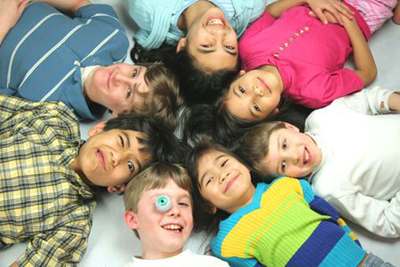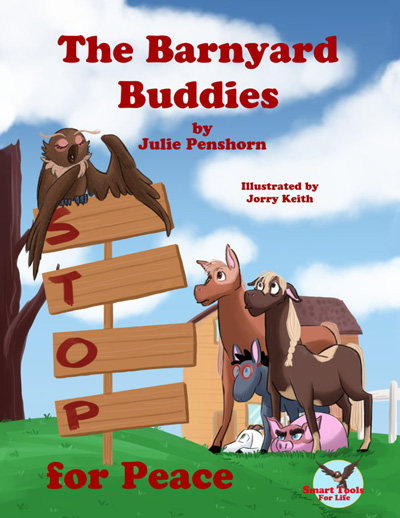New kids are not new, but their numbers are much higher
Children of today face a very fluid classroom community. They don’t know if their best friend will be there tomorrow. I recently visited a rural 2nd grade classroom. It was amazing to hear that one child had attended five different schools, three children have family members in jail, while several suffer from continual stress over violence at home. It’s not only new kids, immigrants, and refugees that can feel left out and isolated. The lack of belonging in a classroom community is a persistent problem for many children.
Children who feel they belong can overcome more obstacles.

Developing classroom community
Teachers and caregivers are frequently called upon to provide the love and warmth missing at home. Often parents are struggling with issues around poverty, drug addiction, PTSD, and more. A sense of belonging to the classroom community can ameliorate some of the damage caused by a struggling family system and uprooting.
The Body Keeps the Score
A fascinating book providing perspective on the topic of belonging is “The Body Keeps the Score” by Bessel van der Kolk, M.D. This book details the impacts of trauma and PTSD on the brain. It’s readable and provides information about the underlying neuroscience. It shows how those with trauma and PTSD issues have different brain waves and different breath and heart syncing. It’s fascinating because he’s personally experienced in all the therapies and treatments he mentions. Thus, he has a deep understanding and a unique perspective.
Don’t give up on wounded children. Provide a safe environment!
Van der Kolk clearly says, “People can learn to control and change their behavior, but only if they feel safe enough to experiment with new solutions. . . Where traumatized children are concerned, the last things we should be cutting from the school schedule are. . . chorus, physical education, recess, and anything else that involves movement, play, and other forms of joyful engagement.” (page 351).
Patricia Jennings, author of “The Trauma-Sensitive Classroom,” says the zero-tolerance policies of the past two decades have not reduced school violence and misbehavior. They have aggravated student behavioral problems, especially those that are rooted in exposure to stress and trauma.” (page 1).
How do you create an environment where all children thrive?
At Growing Communities for Peace we rejected the zero-tolerance policies from the beginning. And, we have always believed that children have a huge capacity for solving their problems. Children show amazing kindness and thoughtfulness toward others when afforded the chance to puzzle through to solutions. They learn more from dialogue and guidance than from dictates.
Every child deserves a safe educational environment
Children that are well-behaved and easy to teach role model and teach children who are not yet peaceful. Teacher language always focuses on building behaviors of those who are still learning.
Here are excerpts from the Parent and Educator Guide of “The Barnyard Buddies Meet a Newcomer” along with ideas teachers shared with us for welcoming newcomers, creating a safe space, and enhancing belonging
- Invite two or three children to do a short role-play to learn to be kind to others. Coach the children to act out a “new student” drama where one child is new and the two others are welcoming. What are the words the children say when they are welcoming? Make their thinking visible. Write what they say on chart paper and post, so when a new person arrives, they remember to use these kind phrases.
- Ask children to draw a picture of a time they felt scared and what their fear or concern was about. When we know more about people’s fears or concerns, it is much easier to respect them.
- Immigrants, refugees, and newcomers look for ways to become involved, bring more peace, or offer their skills and ideas to their new communities. There are all sorts of ways to do that. Think about your day and draw a picture of how you contributed in a caring way with your family, friends, or classroom. Those are some of your communities. Put these pictures in a Community Journal. Keep it in a special place where children can enter pictures of how they welcomed a newcomer, cleaned up, recycled, shared a toy with someone new, took care of their family animal, sang at the retirement home, and so on.
- Invite children to share what they have seen another person do that supports and grows peace, fairness, kindness, or shows care of the earth. To make sure everyone is recognized, draw names or assign children a specific person to observe. Children can draw a picture of what they witnessed. Later that day or later in the week, have a sharing session. In it, you can appreciate each person. Then, add these drawings to the Community Journal. Make this journal visible in your home or classroom. If tattling, or reporting on negative actions is the norm, it may take time for children to learn to focus on the positive contributions of others. Remind them that is their assignment. Then, watch peace grow.
- Sing a welcome song. Use the tune of Freire Jacque: Welcome (new student’s name) Mary, welcome Mary, to our class, to our class. So happy to have you! So happy to have you! Join our song. Join our song. Singing is a wonderful way to engage children with the community and inspires a sense of belonging.
We can’t force children to learn
Often we are trying to cram intellectual understanding into a resistant brain that can’t open to new information until it feels safe and welcome. That is to say when it “belongs” in the setting.
A story
A friend of mine suffered from ADHD, and in-class he was a failure. He was very capable at recess and the fastest runner. No one celebrated him where he was a success. Instead, they isolated and belittled him for his academics. With nothing else to offer, he felt he didn’t belong. His painful lack of belonging resulted in him dropping out of school in 8th grade. This man’s IQ is in the high 130s. What a waste. Looking at activity 3 above, I wonder how his athletic excellence might have become his contribution? Maybe he would be able to add more traditional contributions after being recognized for his current abilities?
You belong to our community of supporters! Let our work support you!
We wrote “The Barnyard Buddies Meet a Newcomer” and you can now get it directly from our website. We aren’t going to release it officially until May 1st. This is your chance to get a pre-release copy. Click the picture below. All books we ship have the author’s signature. Reviewers rave about this book, and you will too.

The Barnyard Buddies Meet a Newcomer
Who can benefit from this book about belonging?
All children in grades preschool to three need opportunities to build their social and emotional skills. Belonging is a key to life success. This book inspires children and teachers to include and welcome others. The story tells of an abandoned, lonely, and a hungry dog who isn’t welcome in the barnyard community. Finally, he finds his way into the hearts of the other animals. And, in the end, a reluctant, Farmer Jim. Reading this book sets the stage for the compassionate treatment of all others. The Parent and Educator Guide can help you build a more inclusive setting and reduce “otherizing” and related bullying as well. We must never forget that most bullies have been bullied. 71% of school shootings were done by people who had been bullied.
You can be part of the solution! Share these children’s books!

